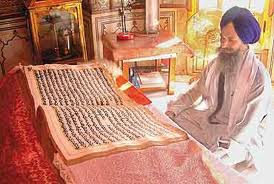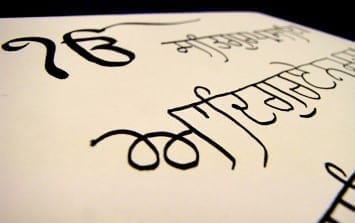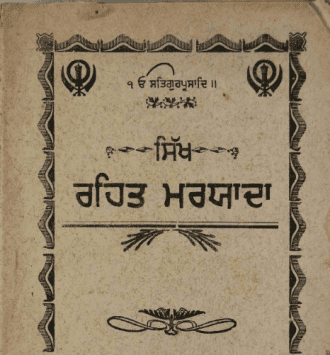
Damdami Taksal is a respectable Sikh seminary that has not only produced Sikh scholars, but also courageous warriors like Sant Jarnail Singh Khalsa Bhindranwale, Bhai Amrik Singh (Sikh Student Federation), Baba Gurbachan Singh Manochahal and countless others who laid down their lives during the Sikh freedom movement. However, more recently, the Damdami Taksal has been targeted by the Government agencies who have plotted infiltrators within the organization.
Bhai Harnam Singh Dhumma is one such element who has been at the centre of controversy for some time, however more recently he has come in the limelight for being implicated as the mastermind of the murderous killing of the innocent Sikh preacher Bhai Bhupinder Singh and attempted murder of Bhai Ranjit Singh Dhadrianwale.
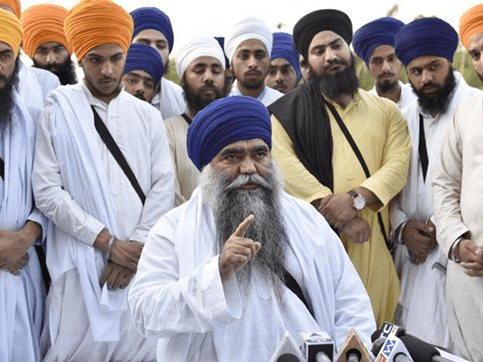
Who is Baba Harnam Singh Dhumma and how did he manage to become Jathedar of the Damdami Taksal?
Harnam Singh Dhumma was a green card holder of the USA. He migrated out of India in the early 1990s during the height of the Punjab agitation and freedom struggle. As per Baba Dhumma’s own claims, he has been tortured by the Punjab Police during the 80s, following the Dharam Yudh Morcha by Sant Jarnail Singh Bhindranwale.
When writing about Baba Harnaam Singh Dhumma, one must refer to revelations by renowned journalist Surinder Singh. In one of his Talking Punjab episodes, Surinder Singh mentions that K.P. Gill played a prominent role in helping Baba Dhumma take over the Damdami Taksal. Similar revelations were made by Baba Lakha Singh in 2007 in an interview with ‘Khalsa Press’.
In the interview, Baba Lakha accuses Baba Dhumma of working as a close associate of K.P. Gill and Prakash Badal. K.P. Gill masterminded abductions and murders of thousands of Sikhs during the 1980’s. Baba Lakha Singh held that Baba Dhumma received the ‘ticket’ to settle abroad after pleasing Gill and with the promise to infiltrate Sikh institutions. According to Baba Lakha Singh, Baba Dhumma and Baba Dharam Singh held a closed door meeting with K.P. Gill and Khushwant Singh in room number 7 at Mehta Chowk in 1992.
As per the interview, on October 14, 1992, K.P. Gill, the Chief of Punjab Police visited Mehta Chowk headquarters where he received a Siropa at the behest of Baba Dhumma. Some believe that the Sikhs at Mehta Chowk did not realise that the individual was Gill, until it was too late. After this Harnam Singh Dhumma became friends with K.P. Gill. It is claimed by Baba Dhumma’s critics that through Gill, he made understanding with the Indian Intelligence Agency and finally the Rashtria Sikh Sangat. Thereafter, he settled in Seattle and then established Gurdwara Nanak Prakash in Fresno, California, which became his base in the USA.
Before Baba Thakur Singh Ji’s death in 2004, rumours were going around who would become the next Jathedar. Giani Raam Singh (Sangrawa) was given responsibility to manage all Damdami Taksal’s institutions. This led to some minor disagreements within the Taksal as some groups objected to Giani Raam Singh’s appointment. After Baba Thakar Singh Ji’s death, with the climate of rumors that Sant Jarnail Singh’s eldest son, and Jasbir Singh Rode (the nephew of Sant Ji) were also possibilities for the next Jathedar, the Indian Intelligence and Harnam Singh Dhumma seized the opportunity. Baba Dhumma was brought back from the USA to India for taking on the succession in place of predicted Giani Raam Singh.
On 2nd of January 2005, Baba Dhumma was made the Jathedar of Damdami Taksal (Mehta Chowk) with the help of Jasbir Singh Rode, whom many people have questioned for his credentials and proximity with government agencies. In parallel, the SGPC initially gave ‘dastar’ of the Damdami Taksal to Giani Raam Singh. It later took a U-turn and recognized Baba Dhumma as the Jathedar. In 2005, those present at Baba Dhumma’s ‘dastarbandi’ or installation ceremony, included Baba Sarbjot Singh Bedi (President, Sant Samaj), S. Simranjit Singh Mann (President SAD, Amritsar), Bhai Mohkam Singh (Damdami Taksal), Sucha Singh Chhotepur MLA, Dr. Jagjit Singh Chauhan (former exiled-Khalistani leader), Harcharan Singh Dhami (President Dal Khalsa), Bhai Ranjit Singh (former Jathedar of Akal Takht), Karnail Singh Panjauli, and Wassan Singh Zafarwal.
Taksal had at one point remained the center of Sikh political struggle in the 80s when Sant Jarnail Singh Ji Bhindranwale led the Dharam Yudh Morcha. However, the appointment of Baba Harnam Singh Dhumma led to downfall of one of the Panth’s most prestigious Jathebandis. By now, the Taksal was split in multiple factions –
- Harnam Singh Dhumma led Taksal:
Headquarters: Mehta Chowk
Government backed and politically aligned with Badal and SGPC
- Baba Mohan Singh Bhindranwale led Taksal
Headquarters: Bhinder Kalan
Student of Baba Gurbachan Singh Ji Bhindranwale. After Baba Gurbachan Singh’s passing away, Jatha Bhindran split with some saying Baba Mohan Singh was the next successor and others saying Baba Kartar Singh Ji. Since the split, this particular faction of Taksal has remained quiet and has distanced from other factions.
- Giani Raam Singh Sangrawa led Taksal
Headquarters: Gurdwara Gurshabad Parkash (Sangrawa, Batala)
Earlier indicators before Baba Thakur Singh Ji death were in favour of him being the ‘caretaker’. He claims Baba Thakur Singh gave him a dastar of succession before his death. He was initially recognised as the new Jathedar of Bhindran-Mehta Jatha by the Jathedars of all five Takhts and Avtar Singh Makkar (President SGPC).
- Bhai Amrik Singh Ajnala led Taksal
Headquarters: Gurmat Vidyala Damdami Taksal Ajnala
Completely rejects Baba Dhumma as the Jathedar of Damdami Taksal. Damdami Taksal Ajnala also refuses to recognize Giani Raam Singh as Jathedar since Bhai Ajnala is of the view that Sant Jarnail Singh Ji Bhindranwale is not shaheed. Bhai Ajnala was chosen as the Jathedar of Takht Sri Kesgarh Sahib at the Sarbat Khalsa 2015.
Leading the Damdami Taksal (Mehta Chowk), Harnam Singh Dhumma first presented himself as an anti-Badal, but he then made a U-turn and shook hands with Badal. This was allegedly at the instructions of the intelligence agencies. Open declaration of union between Badal and Baba Dhumma was announced in August 2011 when both joined hands to contest the SGPC elections as one group.
In the last 11 years Baba Dhumma’s supporters quote his achievements as:
- Has continued to do katha and parchar after the demise of Sant Jarnail Singh Ji Bhindranwale and Baba Thakur Singh
- Held Dasam Granth Gian Prabhod Samagam and trying to standardize the recitation of Dasam Granth
- Driving force behind constructed a 1984 memorial Gurdwara in Sri Harmandir Sahib complex, after being promised it for years by the SGPC.
In the the last years Baba Dhumma’s critics quote his anti-Panthik activities as:
- January 2010 – Revoked the Panth-approved Nanakshahi Calendar
In 2003, thousands of Sangat at Takht Damdama Sahib gathered where the then Akal Takht Jathedar, Giani Joginder Singh Vedanti, passed the Gurmatta of a new fixed date calendar, known originally as the Nanakshahi calendar. Baba Dhumma along with Giani Iqbal Singh (Patna Sahib), Avtar Makkar (SGPC), Sukhbir Badal (SAD), Baba Dharampal Singh (Nanaksar Samadh-Bhai), Baba Lakha Singh (Nanaksar Kalera), Amarjeet Singh Chawla (SSF), Paramjeet Singh Khalsa (SSF Mehta) held a meeting in Delhi in 2008 seeking to change the Nanakshahi calendar and change the Akal Takht’s Sikh Rehat Maryada. The RSS had also announced that they would not allow Sikhs to have their own calendar. Soon after, Dhumma convinced the SGPC President to change the calendar without consultation with the Panth.
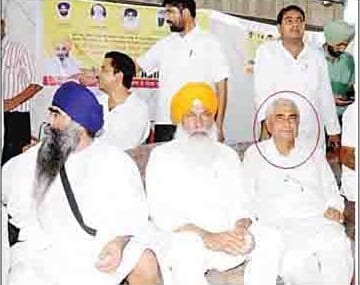
- November 2011 – Sharing stage with notorious Sikh butcher, Izhar Alam
Parkash Badal granted a clean slate to the butcher of Sikhs, former DGP, Mohammed Izhar Alam, by honouring him with a Siropa during the inauguration of Hazrat Haleema Maternity and General Hospital run by the Wakf Board at Malerkotla on 6th November 2011. After the SGPC elections, both SAD (B) and Sant Samaj were scorned by Sikh organizations for remaining silent about allegations against Izhar Alam. It was finally after pressure by International Sikh bodies that Baba Dhumma publicly asked Badal to clear his stance on Alam. As seen in the picture above, Baba Dhumma has shared the stage with Izhar Alam in the past.

- December 2011 – Officially joins hand of support to Prakash Badal and his Akali Dal (B)
In 2005, Baba Dhumma had requested Sri Akal Takht Sahib to summon Parkash Badal when he labelled Sant Jarnail Singh Bhindranwale a terrorist and member of Congress (I) during a debate in India’s Vidhan Sabha. The announcement that the so-called official Jathedar of Damdami Taksal will support SAD (B) leaves one to question: “Would Sant Jarnail Singh Bhindranwale ever allow such misconduct by Damdami Taksal?”

- March 2012 – Baba Dhumma honors the victory of Prakash Badal in elections
At the oath taking ceremony held at Chappar Chiri, Baba Dhumma gave a Siropa in support of Prakash Badal. The same Prakash Badal with his new government appointed DGP Sumedh Saini, who participated and orchestrated genocidal crimes against Sikhs, as the new Inspector General of Punjab Police.
- June 2015 – Dhumma led Damdami Taksal awarded ‘Panth Rattan’ to Avtar Singh Makkar (SGPC President)
Damdami Taksaal (Mehta) held a Samagam to honor Shaheeds of 1984 where Baba Dhumma gave Panth Rattan award to SGPC head Avtar Singh Makkar at Gurdwara Sahib in Mehta. The same Avtar Singh Makkar had banned in the same month saying ‘Khalistan Zindabad’ in Sri Harmandir Sahib complex and had his Task Force beat countless Singhs that gathered to remember the 1984 Sikh holocaust and give their respects to the martyrs of Khalistan.
- December 2013 – Refused to support “Bandi Singh Rehae Morcha”
When Bhai Gurbasksh Singh started the “Bandi Singh Rehai Morcha” from Gurdwara Amb Sahib, many Sikh personalities became involved. One person however remained missing until the very end. This was Baba Harnaam Singh Dhumma. When Bhai Gurbaksh Singh was struggling at Amb Sahib, Baba Dhumma spent much of the time in Mumbai. He came to Bhai Gurbaksh Singh’s support at the very end, just days before the morcha was sabotaged. He has since not taken up the issue with the Punjab Government, despite being a strong ally.
- September 2015 – Supported the pardoning of anti-Sikh cultist ‘Baba Ram Rahim’
Ram Rahim attempted to impersonate Guru Gobind Singh Ji and mock the Amrit Sanchaar ceremony of 1699, landing him in trouble with Sikhs. With protests that followed Sikhs attained martyrdom and were attacked by his followers. With a list of criminal cases against him, including rape, murder and castration of male followers, the Badal appointed Jathedars of the Takhts gave him pardon which was justified and supported by Baba Dhumma. As a consequence of this, Sant Samaj fired Baba Dhumma as being President of Sant Samaj.
- October 2015 – Baba Dhumma fails to attend protest at Bargarhi against Beadbi of Sri Guru Granth Sahib Ji.
During the countless beadbis of Sri Guru Granth Sahib Ji and the Kot Kapura killings of innocent Sikh protestors, Baba Dhumma and his faction took a back seat and didn’t come to the forefront. Many had expected that Baba Dhumma would be on the forefront and put pressure on the government considering his close links with the Badal ruling party. Due to his silence and inaction, on 13th October 2015, someone in the Sangat of his USA controlled Gurdwara in Fresno, removed his photograph from the gallery.
- November 2015 – Called for a boycott of Sarbat Khalsa 2015
On 28th October 2015, Baba Dhumma with a section of Sant Samaj had a meeting with the Prakash Badal and Sukhbir Badal to stop the planned Sarbat Khalsa in November 2015. Baba Dhumma along with CM Prakash Badal appealed to the Sikh community to boycott the Sarbat Khalsa. He refused to acknowledge the Sarbat Khalsa 2015 gathering as Sarbat Khalsa and nor does he acknowledge the Panth chosen Jathedars, as supposed to the Badal appointed rejected Jathedars.

- May 2016 – Has his hitmen attack Bhai Dhadrianwale
Baba Dhumma did a speech at Gurdwara Bangla Sahib criticising Bhai Ranjit Singh Dhadrianwale for violating Maryada. 25 days, Bhai Dhadrianwale gives a response and calls Bhai Dhumma a ‘Sarkari Sant’ on the stage. In reaction to this, Baba Dhumma had assassins from his group stop Bhai Dhadrianwale and his cavalcade in the excuse that they were Sikh serving cold drinks as part of ‘Chhabeel’. After stopping the assassins of Baba Dhumma’s group attack Bhai Dhadrianwale’s vehicles and attempted to murder him, however, instead Sikh preacher, Bhai Bhupinder Singh, got shot dead in cold blood. Baba Dhumma made comments to the press afterwards that they will provide legal costs for the murderers and that is what happens when people criticise Damdami Taksal.
References:
Dhumma a lackey of KP Gill & Badal: Baba Lakha Singh (2007), http://www.Panthik.org/articles/3685
Baba Dhumma’s Picture Stolen from Gurdwara Nanak Parkash (Fresno) (2015), https://www.sikh24.com/2015/10/17/california-baba-dhummas-picture-stolen-from-gurdwara-nanak-parkash-fresno/
Bhindranwale aide is taksal chief (2003) – http://www.tribuneindia.com/2003/20030619/main10.htm

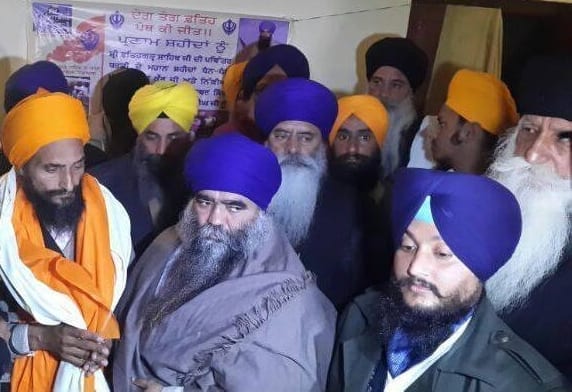



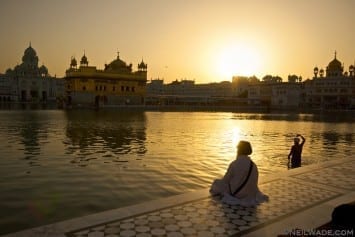


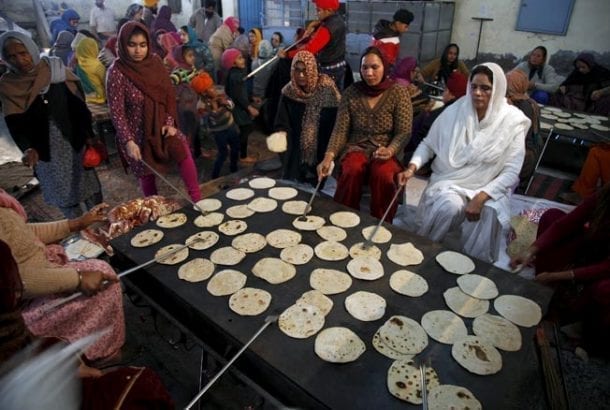
 joy or relief to someone else, to help someone who needs it. That sentiment is evident when Sikhs tirelessly devote themselves in community works like these.
joy or relief to someone else, to help someone who needs it. That sentiment is evident when Sikhs tirelessly devote themselves in community works like these.






